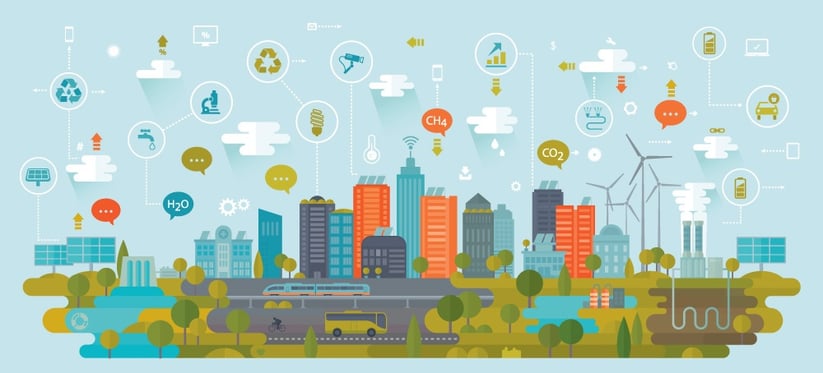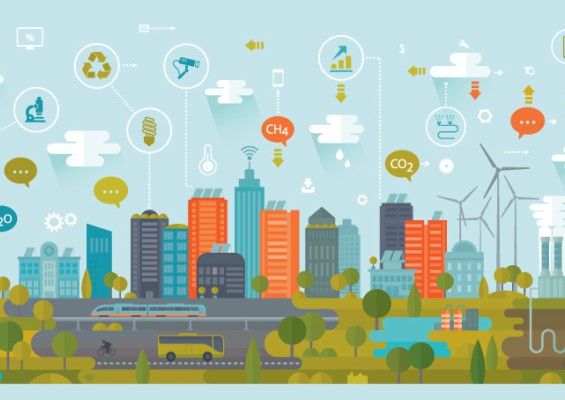The Clean Growth Strategy announced last week set out 50 policies and proposals that aim to achieve decarbonisation across several sectors by 2030. With heat networks playing a common theme throughout, we look at what’s in store for our industry.

What is the clean growth strategy?
In 2008, the UK committed in the Paris Agreement to reduce greenhouse emissions by at least 80% by 2050. And since then a number of initiatives such as the smart energy plan and improving the efficiencies in industry, have been implemented. The clean growth, defined by the Government as ‘growing our national income while cutting greenhouse gas emissions’ core role is to help deliver that promise. Its purpose being to increase productivity, create good jobs, boost earning power for people across the nation and help protect the climate and environment upon which we and future generations depend.
What role will heat networks play?
The report stated that 32% UK emissions came from heating buildings and industries, and a further 13% from heating homes; by cutting carbon emissions from both of these sectors alone would help achieve a 45% reduction – a percentage not to be sniffed at!
There are a number of low carbon heating technologies that the Government is looking to support; from heat pumps, using low carbon gases (such as hydrogen) in the existing gas grid to district heat networks. However, it isn’t certain which approach or combination will be adopted and what will work best at scale while offering the most cost-effective long-term answer. In high dense areas such as cities, campuses and business parks, it is anticipated that heat networks will be adopted to provide the heat demand, use heat that is currently wasted and low carbon fuels.
Furthermore, the proposal outlined the steps needed to be taken to achieve the objectives set in the Paris Agreement. It highlighted the initiative to build and extend heat networks across the country, underpinned with the £320million heat network funding allocated in 2015.
How will this affect the industry? The Cinderella effect
Flashback to the 1950’s, the Great Smog of London killed over 4,000 with 100,000 more made ill from burning coal at mass to heat homes, factories and businesses. District heating was introduced as a way to deliver coal to homes and businesses more cleanly. However, very soon after this, the UK found oil in the Northern Sea and district heating was put on the back burner (pardon the pun).
The strategy just shows how heat networks have developed their own version of a ‘Cinderella story’ - becoming an answer to providing low carbon heat as a renewable energy source. In recent years we have seen heat networks take centre stage in the utility market becoming the answer to major new build developments in London and major cities across the UK.
What will be the challenges?
Heat Network (Metering & Billing) Regulations, the introduction of the Heat Trust and the launch of the CIBSE Heat Network Code of Practice CP1 guide have all provided challenges but have contributed to establishing heat networks to grow. All of this has aided the previously unregulated industry adopt new codes of best practice that should in years to come, help the industry flourish, and advance system efficiencies.
The Strategy claimed that decarbonising heat is one of the most difficult policies and technological challenges required in order to meet the carbon targets. It is anticipated that the decision on which to drive the heat will not be made until the first half of the next decade which evidently shows the time allowances expected before any changes actually take place.
What are the benefits?
The largest benefit has to be said – is the monetary value that these changes will bring. The actions and investments needed to carry out the infrastructure changes in the energy market to meet the Paris commitments, are estimated to reach up to $13.5 trillion of public and private investment. On the plus side, there is also an expected reduction in energy bills for both domestic and business consumers, increase of jobs and cleaner air.
What do you think?
We would like to hear about what you think of the Strategy and if you feel it goes far enough to map out the expected changes required to meet the UK’s targets?
Key takeaways
- 35% of carbon emissions comes from industry and 13% from homes
- By 2050 the UK must have reduced its gas emissions by at least 80% to meet the Paris Agreement
- Heat networks, along with heat pumps are two options that have been put forward to help achieve this
- The benefits of these changes are: cleaner air, reduced bills and more jobs in energy
- The Government expect that the policy will be a difficult one to implement with decisions on the precise strategy not due to take place until the first half of the next decade



